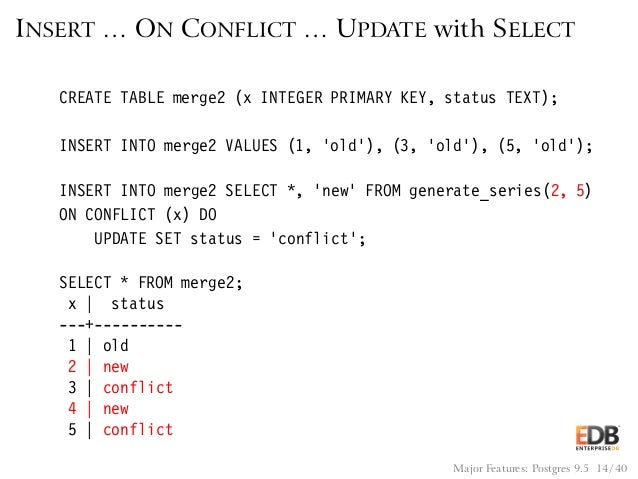

Ordinarily, the input rows are fed to the aggregate function in an unspecified order. This can be assumed to be true, unless otherwise specified, for all built-in aggregates.įor example, count(*) yields the total number of input rows count(f1) yields the number of input rows in which f1 is non-null, since count ignores nulls and count(distinct f1) yields the number of distinct non-null values of f1. Most aggregate functions ignore null inputs, so that rows in which one or more of the expression(s) yield null are discarded. The last form is used with ordered-set aggregate functions, which are described below. The fourth form invokes the aggregate once for each input row since no particular input value is specified, it is generally only useful for the count(*) aggregate function. The third form invokes the aggregate once for each distinct value of the expression (or distinct set of values, for multiple expressions) found in the input rows. The second form is the same as the first, since ALL is the default. The first form of aggregate expression invokes the aggregate once for each input row. The optional order_by_clause and filter_clause are described below. Where aggregate_name is a previously defined aggregate (possibly qualified with a schema name) and expression is any value expression that does not itself contain an aggregate expression or a window function call. The syntax of an aggregate expression is one of the following: aggregate_name ( expression ) Īggregate_name (ALL expression ) Īggregate_name (DISTINCT expression ) Īggregate_name ( * ) Īggregate_name ( ] ) WITHIN GROUP ( order_by_clause ) An aggregate function reduces multiple inputs to a single output value, such as the sum or average of the inputs. This notation behaves differently depending on context see Section 8.16.5 for details.Īn aggregate expression represents the application of an aggregate function across the rows selected by a query. You can ask for all fields of a composite value by writing. The parentheses are required here to show that compositecol is a column name not a table name, or that mytable is a table name not a schema name in the second case. (Thus, a qualified column reference is actually just a special case of the field selection syntax.) An important special case is extracting a field from a table column that is of a composite type: In general the row expression must be parenthesized, but the parentheses can be omitted when the expression to be selected from is just a table reference or positional parameter. If both conditions are false, we will raise a message with a notice saying that both variables are equal.If an expression yields a value of a composite type (row type), then a specific field of the row can be extracted by writing expression. If this condition is false, we will move to the else-if block to check if variable1 is less than variable2.

RAISE NOTICE 'variable1 is greater than b' įirst, we will check the condition if variable1 is greater than variable2. Now, we will use format3 to implement the same use case scenario as of example1 and example2 and apply the most compact and appropriate solution for this use case of number comparison. We can overcome this issue by using the format3 of if-else, which allows us to nest other if-else or if statements inside the original ones up to any level, as per our convenience. If both variables are equal, we will display a message saying that “variable1 is not greater than variable2,” indicating that variable1 may be smaller or equal to variable2. RAISE NOTICE 'variable1 is not greater than variable2' Īs we can see here, we can’t check for the equal condition. RAISE NOTICE 'variable1 is greater than variable2' RAISE NOTICE 'variable1 is greater than variable2 ' Here, three separate if statements will be used to achieve our use-case requirement. Then, using the format 1 mentioned above, we will write the statements so that when variable 1 is less than, greater than, or equal to variable2, an appropriate message with the notice will be raised after they are compared using comparing operators.

In our first example, we will consider two variables. This completely customizable structure can be used as per our convenience and requirement. Nesting, if inside or else of another, is also possible. We can use only if the statement if we want to execute certain statements on fulfillment of some condition, or we can use the second format where the control when the condition evaluates to true and when it evaluates to false is given can execute our statements accordingly.


 0 kommentar(er)
0 kommentar(er)
